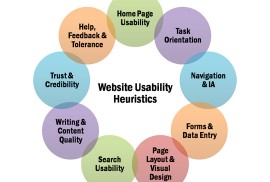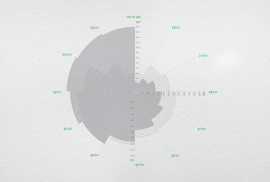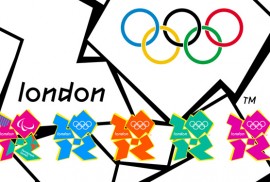
10 Usability Heuristics for User Interface Design
June 21st, 2013
Picture: www.gonifie.com Heuristics derives from the Greek word ‘heuriskein’ and the equivalent meaning in New Latin ‘heuristicus’, translating to ‘discover’ or ‘find out’. Heuristic evaluation is one of the most notable usability methods founded by Jakob Nielson – an expert on computer human interaction. Having been the biggest influence on improving user experience via the ‘discount usability engineering’ movement, he shaped […]
Article written by

Infographics
April 29th, 2013
Infographics are bitesized parts of information that present complex data with clarity and brevity. Information graphics enhances users’ sense of familiarity with patterns or trends. The process that follows is known as data visualisation, information design or information architecture. Utilising infographics as a tool often includes statistics, graphs, pie charts, maps, schematics, grids, site plans and other relevant data. In […]
Article written by

How To Create The Best Website Content
April 12th, 2013
When deliberating about which information is the most effective for providing the best website content, there are multiple factors to consider. It is not just about dynamic visuals and efficient functionality but also the written aspect of the web pages that inform the users. The important guiding principles for this literary element, includes data that is useful, credible, friendly and […]
Article written by

Responsive Web Design
February 28th, 2013
RWD – is an abbreviation of responsive web design and optimises the viewing experience for users by scaling down visuals, so they are cross compatible with an ever growing number of devices. This entails maximising the potential of any interface to meet spatial boundaries and to work effectively, whether displayed on computers, mobiles or tablets. The design criteria includes providing […]
Article written by

Why Digital Design Agencies are the Forerunners of the Digital Age
December 10th, 2012
The digital age, is also known as the computer or information age. Following the industrial revolution, the economy developed into an information society where data was being manipulated. The evolution of this led to the digital age where micro-miniaturisation and technology became prevalent in our daily lives. The information age influenced networking and accelerated global communications, shaping contemporary society. All […]
Article written by

How Has The Web Changed Business Positively?
September 19th, 2012
Over the years, the World Wide Web has become the most desirable tool in the work environment, changing the way business is practised. It connects others with ease instantaneously, in ways that include accessibility and cost effectiveness. The web has not only revolutionised business but also homes, education services, libraries, internet cafes, hotels, hospitals, banks, the entertainment industries, the […]
Article written by

The Different Roles Of Web Developers And Web Designers
August 17th, 2012
The distinction between web design and web development is determined by two different roles in the construction of websites. Design revolves around the aesthetics of a website whilst development deals with the coding, to ensure functionality and accessibility. Sometimes there are individuals who are able to do both however, the majority in the digital industry who may know aspects of […]
Article written by

Tips For Students Approaching Design Agencies For Work
August 7th, 2012
Matt Shelley: Senior Designer at Deep Tim Smith: Senior Designer at Deep Q: Is it better to have qualifications or experience, as a student interested in working for a design agency and what should they be? Matt: Design qualifications are important because they reassure companies that you have hopefully reached a certain standard and understanding of what design is, having […]
Article written by

The London Olympic Logo 2012
July 25th, 2012
A logo or ideogram, is an emblem or graphic mark that represents and promotes the trademark or brand, of a company or individual. In graphic design, it is an important part of creating the corporate identity of commercial enterprises and forging their recognition. A logo is normally comprised of an icon or symbol, or the name of an organisation – […]
Article written by
